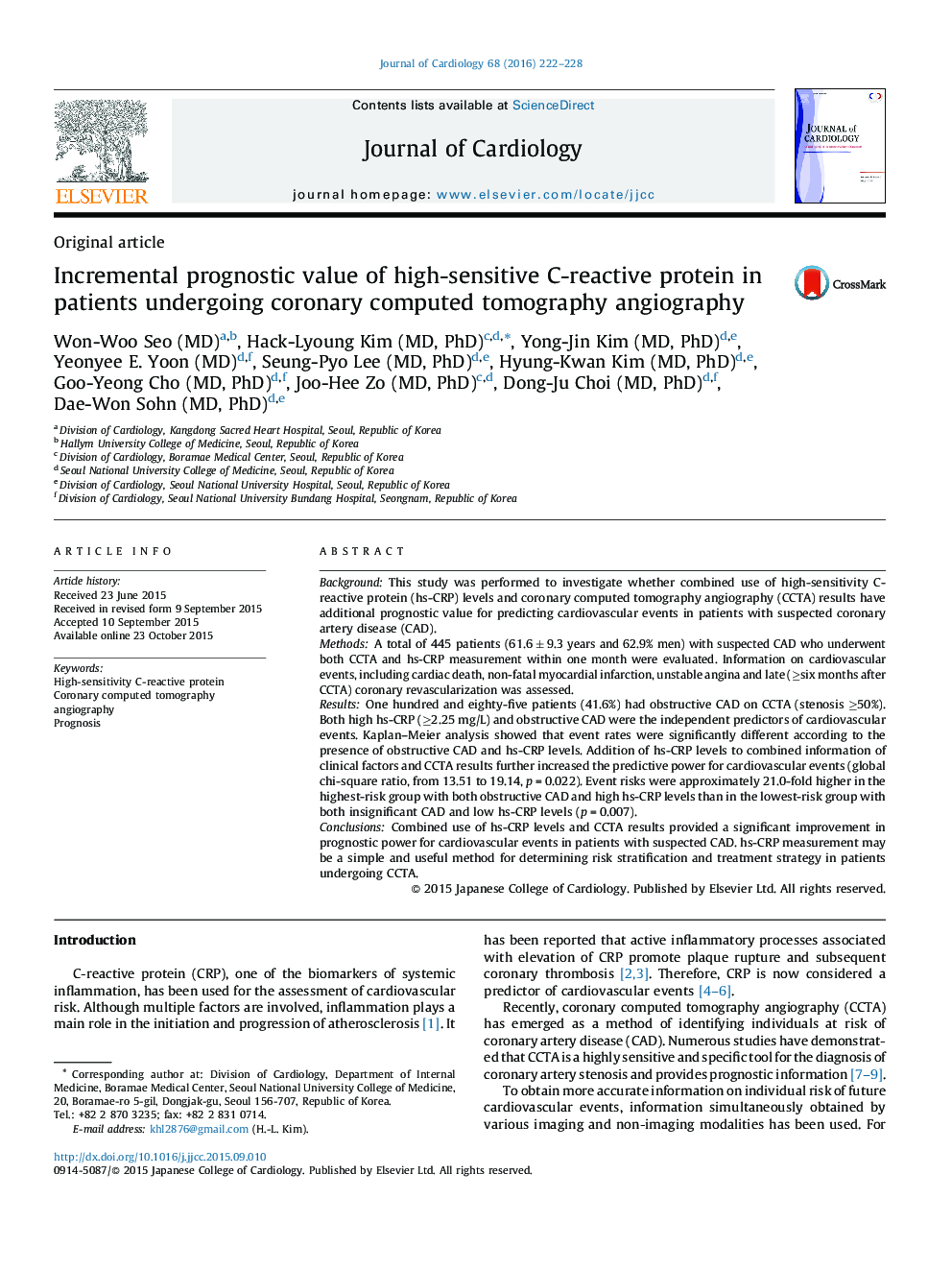| Article ID | Journal | Published Year | Pages | File Type |
|---|---|---|---|---|
| 2962771 | Journal of Cardiology | 2016 | 7 Pages |
BackgroundThis study was performed to investigate whether combined use of high-sensitivity C-reactive protein (hs-CRP) levels and coronary computed tomography angiography (CCTA) results have additional prognostic value for predicting cardiovascular events in patients with suspected coronary artery disease (CAD).MethodsA total of 445 patients (61.6 ± 9.3 years and 62.9% men) with suspected CAD who underwent both CCTA and hs-CRP measurement within one month were evaluated. Information on cardiovascular events, including cardiac death, non-fatal myocardial infarction, unstable angina and late (≥six months after CCTA) coronary revascularization was assessed.ResultsOne hundred and eighty-five patients (41.6%) had obstructive CAD on CCTA (stenosis ≥50%). Both high hs-CRP (≥2.25 mg/L) and obstructive CAD were the independent predictors of cardiovascular events. Kaplan–Meier analysis showed that event rates were significantly different according to the presence of obstructive CAD and hs-CRP levels. Addition of hs-CRP levels to combined information of clinical factors and CCTA results further increased the predictive power for cardiovascular events (global chi-square ratio, from 13.51 to 19.14, p = 0.022). Event risks were approximately 21.0-fold higher in the highest-risk group with both obstructive CAD and high hs-CRP levels than in the lowest-risk group with both insignificant CAD and low hs-CRP levels (p = 0.007).ConclusionsCombined use of hs-CRP levels and CCTA results provided a significant improvement in prognostic power for cardiovascular events in patients with suspected CAD. hs-CRP measurement may be a simple and useful method for determining risk stratification and treatment strategy in patients undergoing CCTA.
